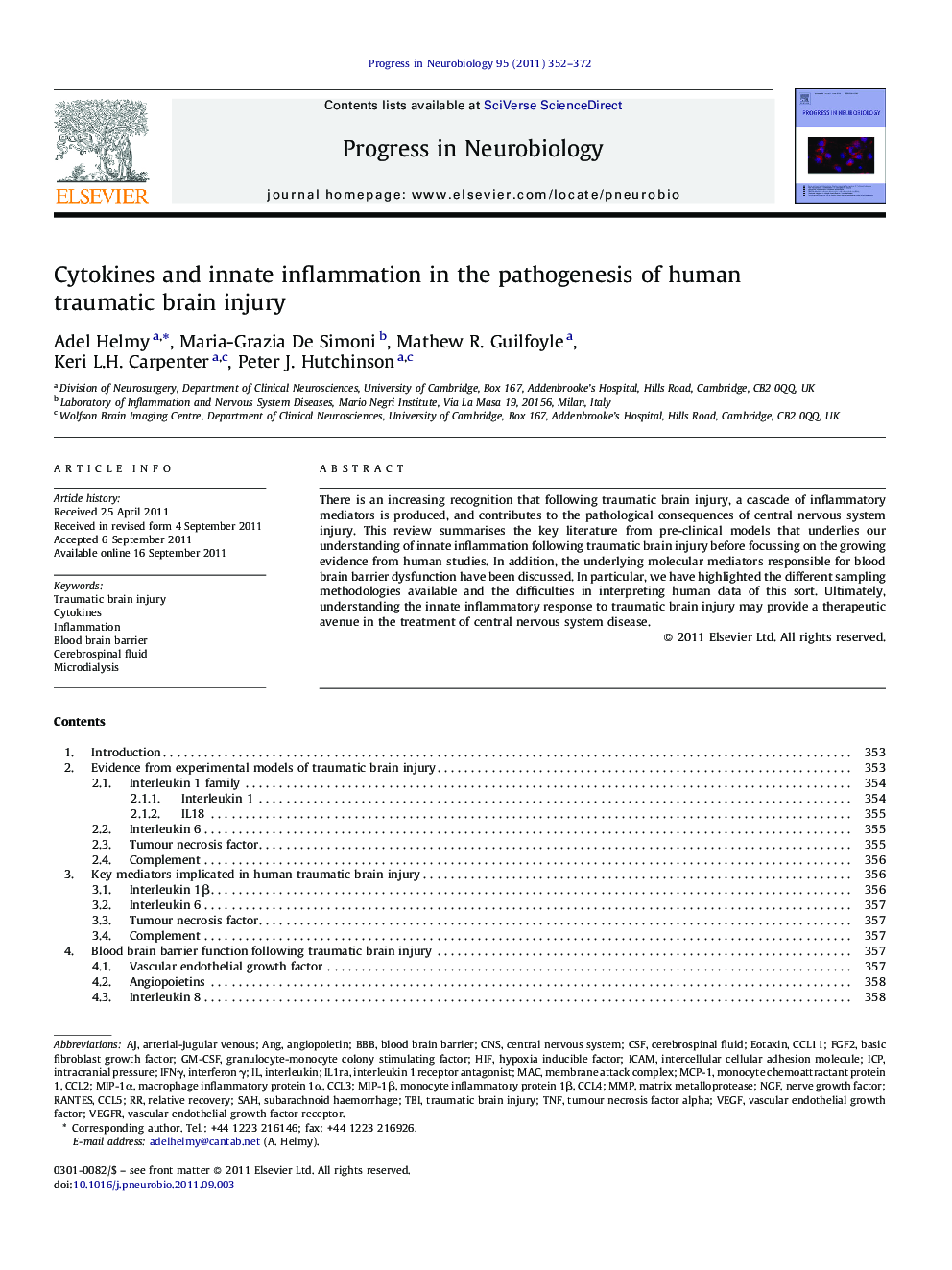| Article ID | Journal | Published Year | Pages | File Type |
|---|---|---|---|---|
| 4353589 | Progress in Neurobiology | 2011 | 21 Pages |
There is an increasing recognition that following traumatic brain injury, a cascade of inflammatory mediators is produced, and contributes to the pathological consequences of central nervous system injury. This review summarises the key literature from pre-clinical models that underlies our understanding of innate inflammation following traumatic brain injury before focussing on the growing evidence from human studies. In addition, the underlying molecular mediators responsible for blood brain barrier dysfunction have been discussed. In particular, we have highlighted the different sampling methodologies available and the difficulties in interpreting human data of this sort. Ultimately, understanding the innate inflammatory response to traumatic brain injury may provide a therapeutic avenue in the treatment of central nervous system disease.
► A wide range of cytokines and growth factors are produced as a result of traumatic brain injury. ► There is evidence for both beneficial and damaging consequences of cytokine production, depending on the concentration and context in which they are produced. ► Blood brain barrier dysfunction is a common consequence of several central nervous system pathologies. ► Cytokine production in blood, cerebrospinal fluid and brain extracellular space is distinct both qualitatively and quantitatively. ► Cytokine action provides a novel and promising therapeutic target following traumatic brain injury.
